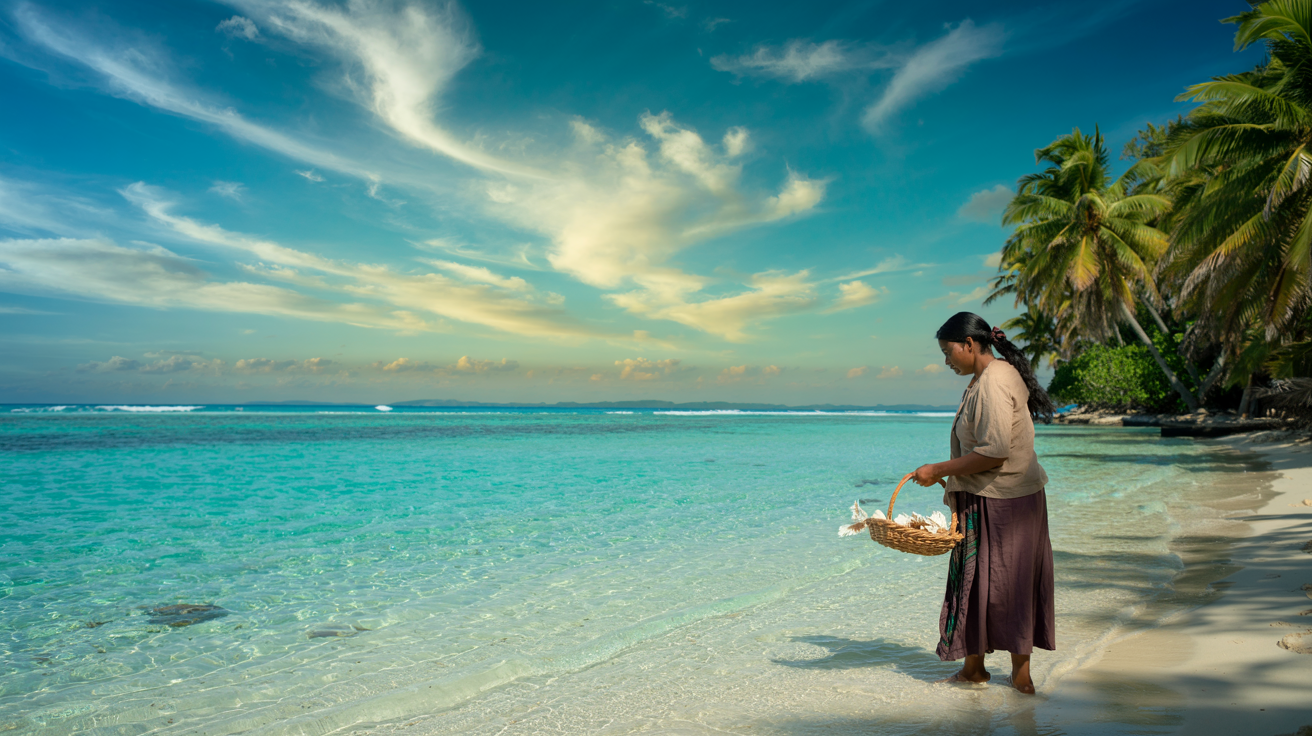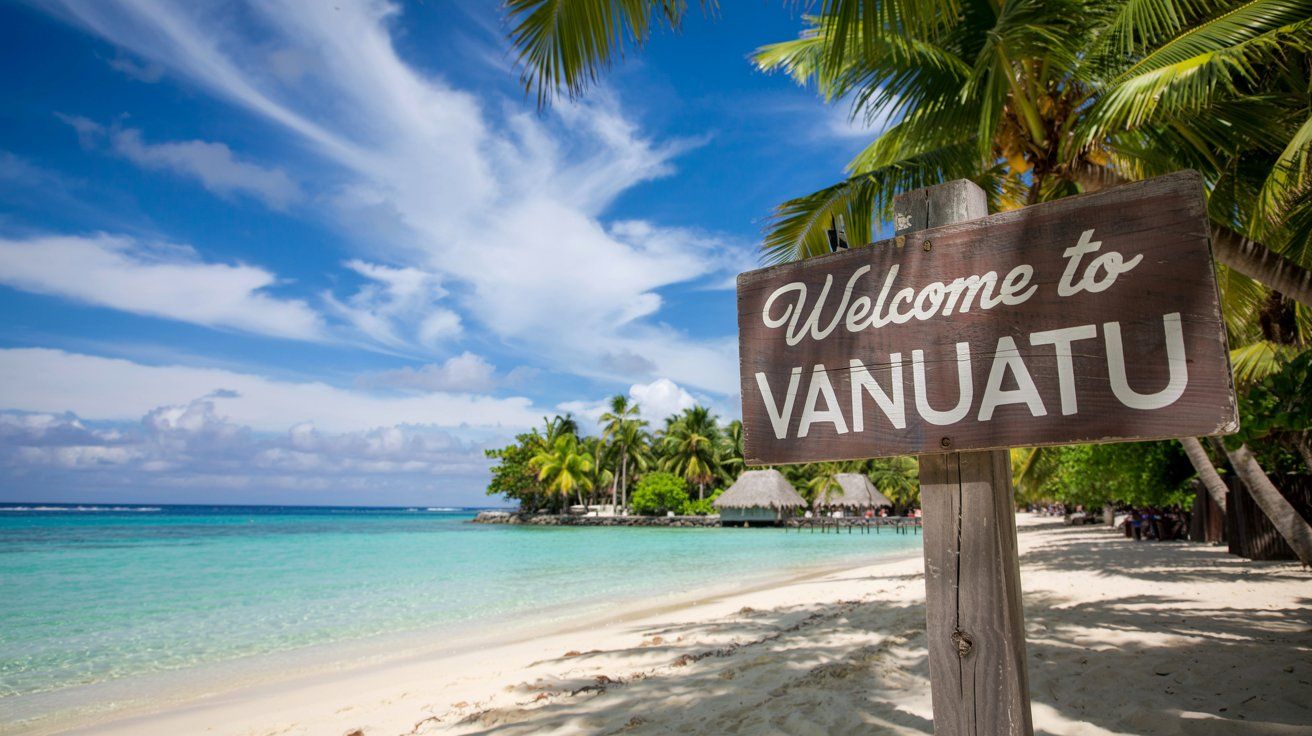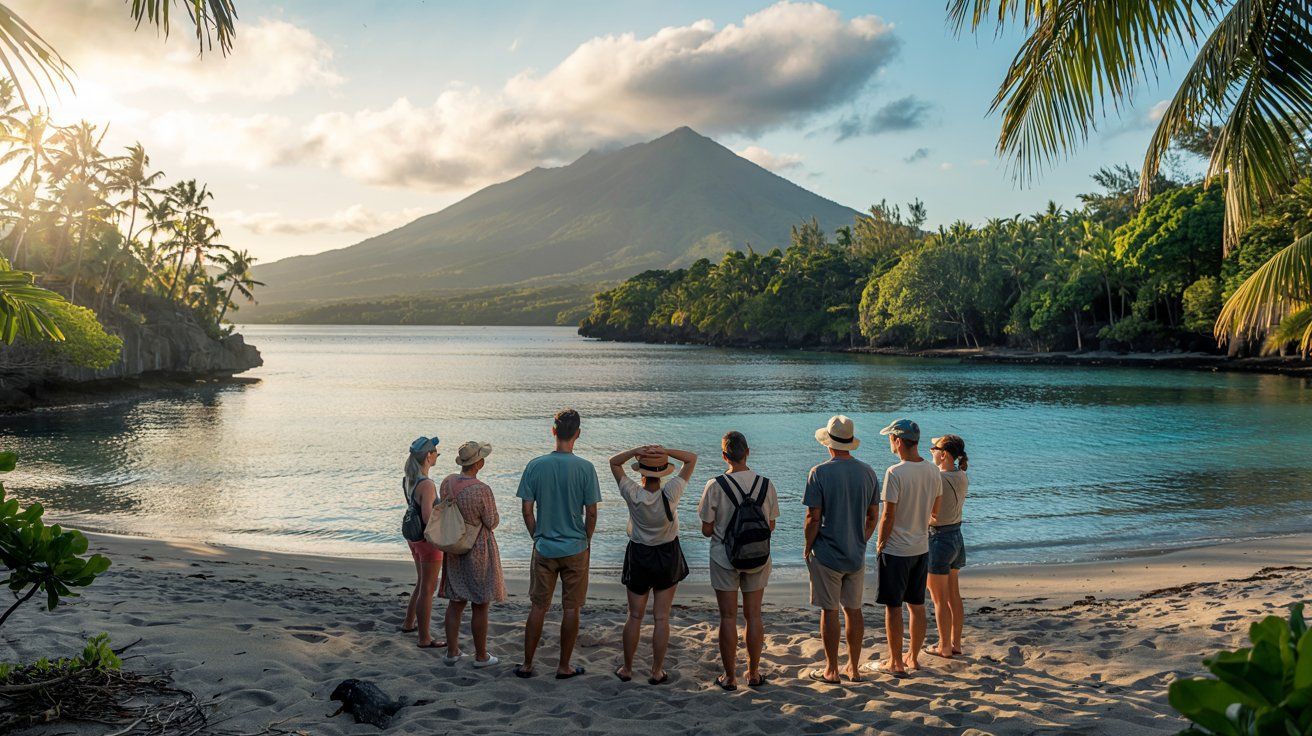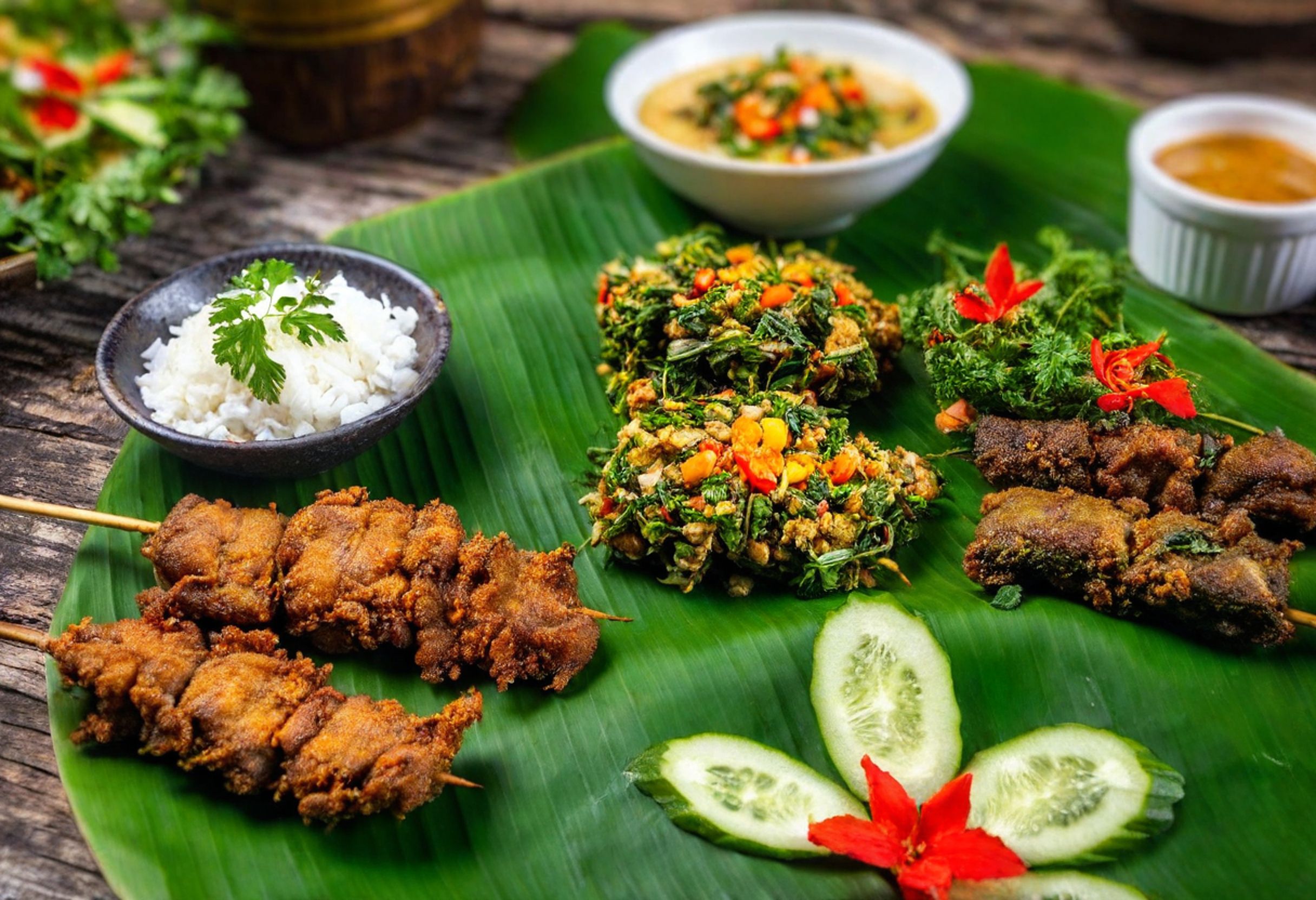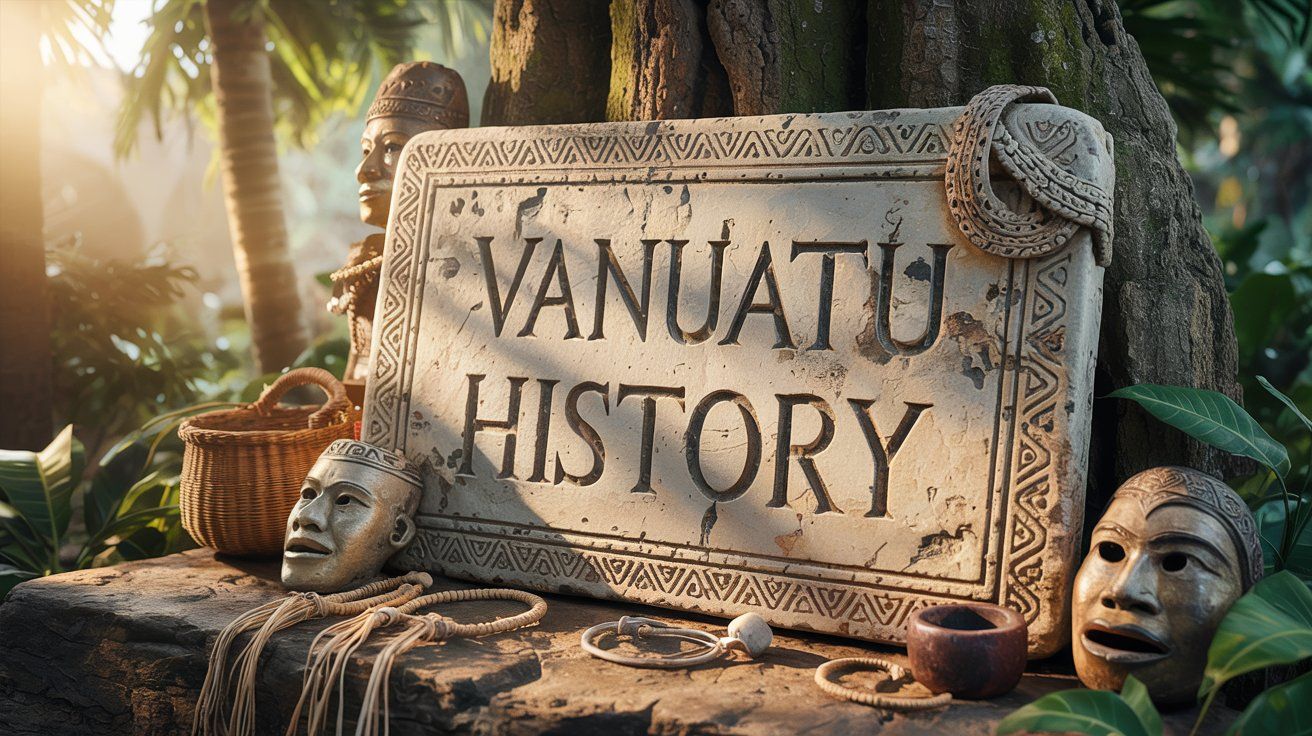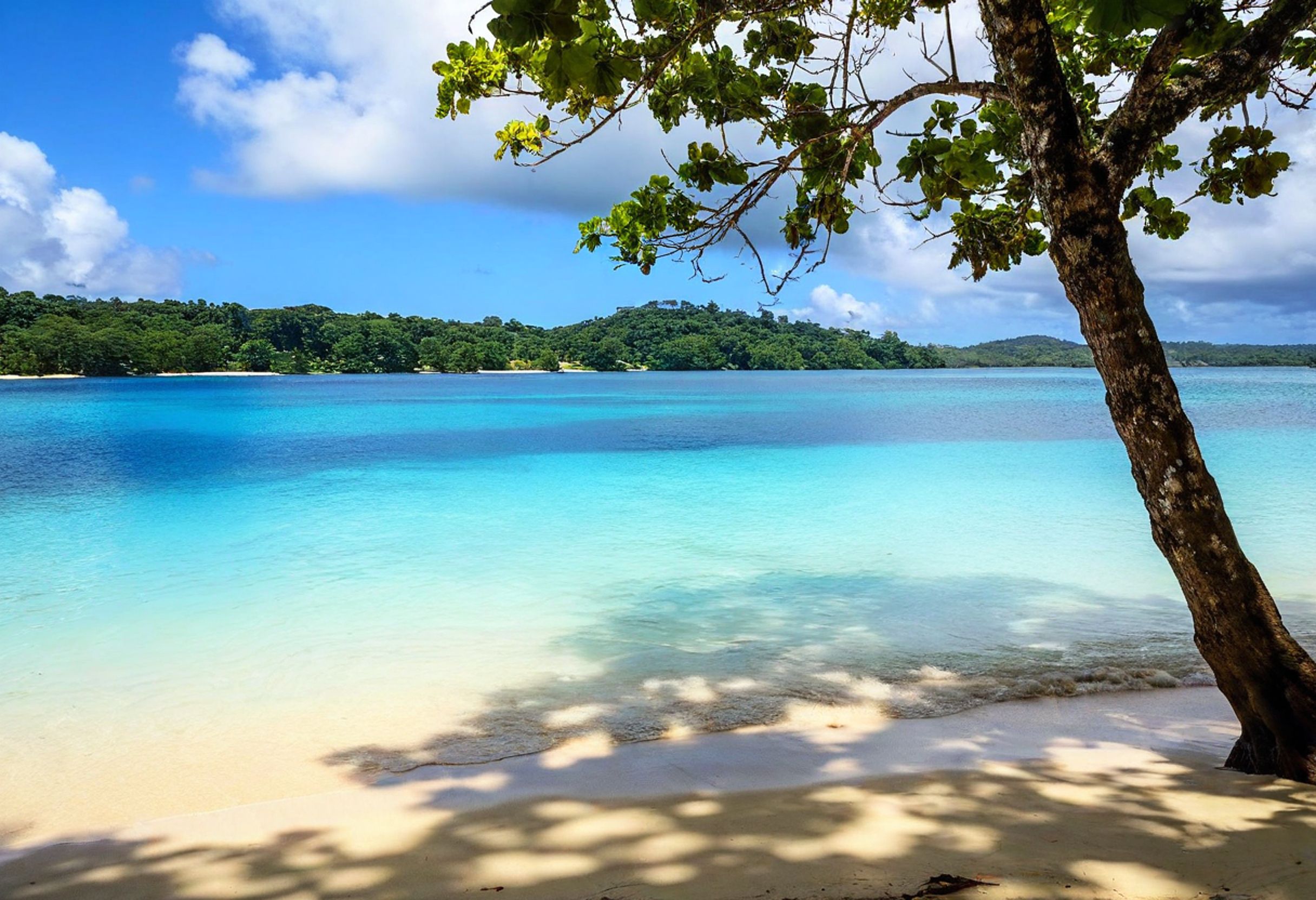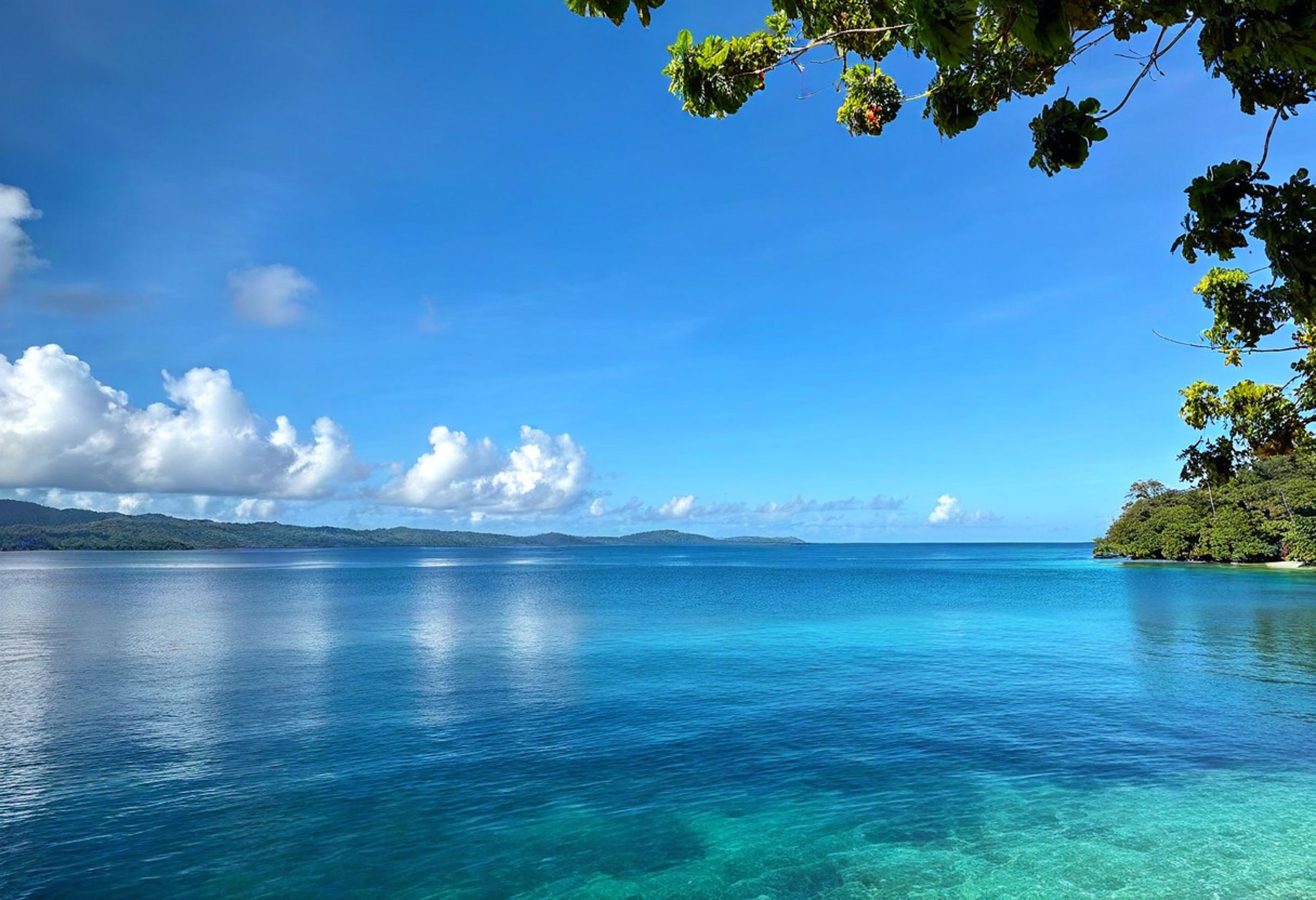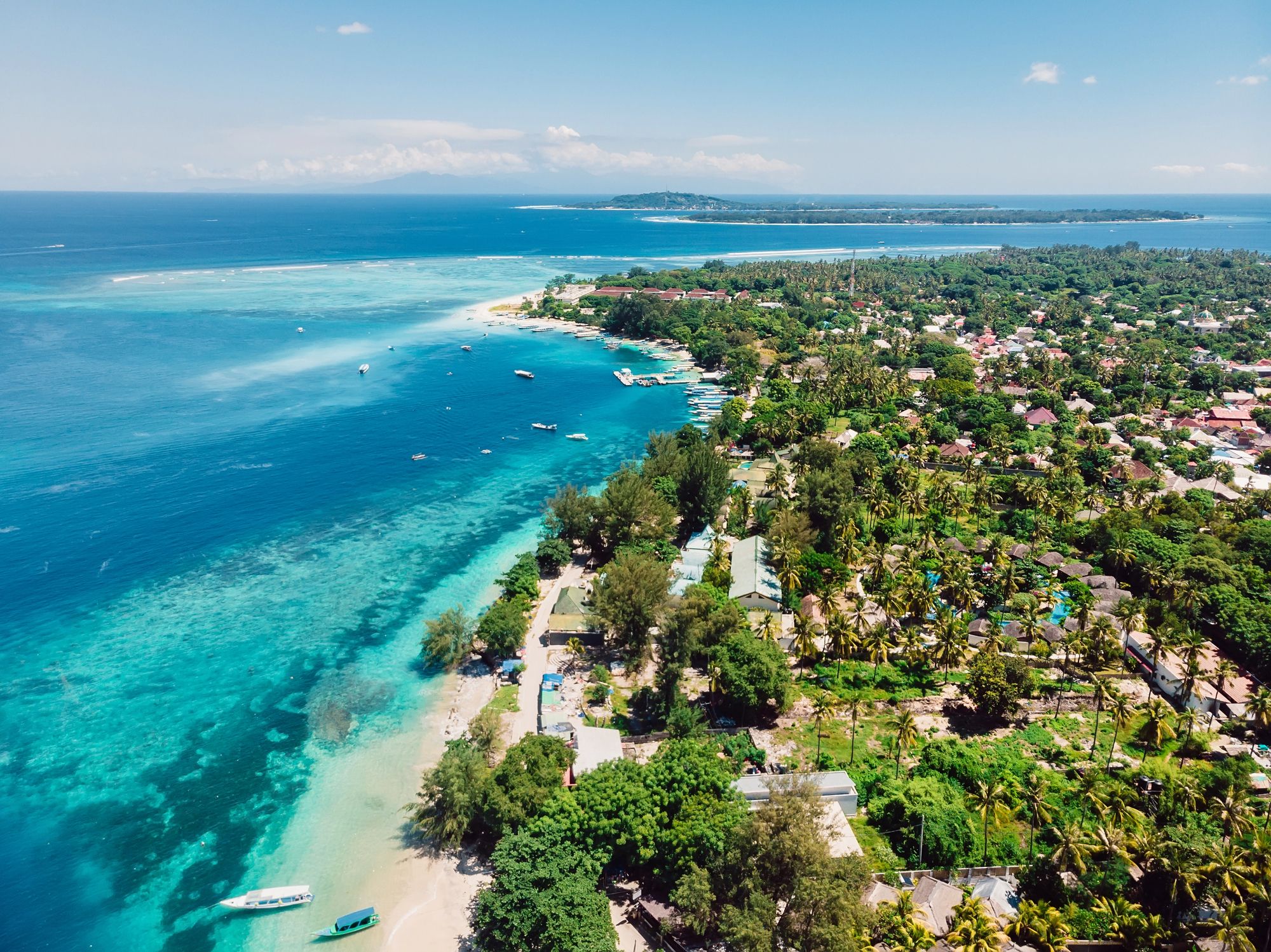Sanma Province sits up in Vanuatu’s northern islands, giving travelers access to some of the South Pacific’s most jaw-dropping natural wonders. You’ll find everything from powdery white beaches to lively coral reefs—honestly, it’s a paradise for both adventure seekers and those who just want to kick back. Sanma Province boasts epic diving spots, those surreal blue holes, and historic places like Million Dollar Point, where you can check out WWII-era military gear that was dumped underwater after the war. It’s like an open-air museum, but submerged.
If you’re heading to Sanma, make time for its highlights. Champagne Beach pulls in visitors with its soft-as-flour sand, and Millennium Cave is a real adventure—a mix of hiking, caving, and river scrambling. The Blue Holes are these sparkling freshwater pools, surrounded by thick, lush forest. They’re unreal.
From overwater bungalows to beachfront resorts, find your perfect stay in this island nation of more than 80 islands. Instant booking with best price guarantee!
Browse Accommodations Now
You’ll get a good mix of nature and culture in this province. Luganville, the second-biggest town in Vanuatu, has all the modern comforts, but you can also visit traditional villages where ancient customs are still alive and well. Whether you’re snorkeling, kayaking, or hiking through the jungle, Sanma gives you those authentic South Pacific vibes—without the crowds.
Overview of Sanma Province
Sanma Province is actually Vanuatu’s largest province, covering Espiritu Santo and a handful of smaller islands. Nature, culture, and history all sort of blend together here.
Geography and Location
Sanma Province is up in the north, right in the South Pacific Ocean. Espiritu Santo, the biggest island in Vanuatu, is the main draw, but there’s also Malo and smaller islands like Aore. Espiritu Santo itself is dramatic—think mountains, thick rainforests, and untouched coastline.
Champagne Beach steals the show with its white sand and clear water. Inland, those blue holes are just wild—deep, bright blue freshwater pools. The east coast has calm bays that are perfect for swimming and snorkeling, while the west side feels a bit more rugged and wild.
Weather-wise, you’re looking at a tropical climate. Wet season runs from November to April, and things dry out from May to October. Most people visit in the drier months—makes sense, right?
History and Culture
Sanma has a deep history, mixing Melanesian traditions with colonial stories. Ni-Vanuatu people have lived here for thousands of years, and their languages and customs are still strong.
Espiritu Santo became a big Allied military base during WWII. You can still see the remains at Million Dollar Point (where they dumped tons of military equipment) and the SS President Coolidge wreck, which is now a famous dive spot.
The culture here really values community and tradition. If you visit a village, locals might show you traditional cooking, crafts, or kastom dances. Many people keep up these customs even as modern life creeps in.
You’ll notice ceremonies, storytelling, and art like wood carving and weaving everywhere. Local markets give you a peek into daily life—and a chance to pick up handmade souvenirs.
Getting to Sanma Province
You can reach Sanma Province by direct flights from Vanuatu’s capital, and sometimes even from overseas. Once you land, there are plenty of ways to get around.
Flights and Airport Access
Air Vanuatu flies daily from Port Vila to Espiritu Santo, landing at Pekoa International Airport near Luganville. The flight is short—just under an hour—and the views from above are something else.
If you’re coming from Australia, there’s a direct weekly flight from Brisbane to Espiritu Santo. That means you can skip Port Vila entirely, which is pretty handy.
When you arrive at Pekoa, you’ll see airport transfers waiting. Most resorts will pick you up if you arrange it ahead of time. Taxis wait outside too—just double-check the fare before you hop in.
Transportation within Sanma
Getting around Sanma is pretty straightforward. Taxis are everywhere in Luganville, and they’re a good way to get to nearby spots. For longer trips, you’ll need to agree on a price.
If you want to explore on your own, rent a car. Several companies in Luganville offer both standard and 4WD vehicles. Usually, your home country’s driver’s license is fine.
Local buses—really minivans with a “B” on the license plate—run between Luganville and nearby villages. They don’t have strict schedules, but they’re cheap and easy for short distances.
For the more remote areas, it’s best to hire a guide who can handle the transportation. Tour operators in Luganville can set this up for you.
Top Destinations in Sanma
Sanma Province is packed with unique spots—cultural, natural, you name it. Each place brings something different, from dreamy beaches to serious hikes. Here’s a handful you shouldn’t miss.
Luganville
Luganville is the main city in Sanma and the second biggest in Vanuatu. Back in WWII, it was a huge American base, and you can still check out historic sites left behind.
Main Street is the heart of town, lined with shops, cafes, and dive shops. The Luganville Market is a fun stop to try local fruit and see crafts made by nearby villagers.
History fans should check out Million Dollar Point—Americans dumped tons of military gear there after the war, and now it’s a popular dive site with jeeps, trucks, and even bulldozers underwater.
The SS President Coolidge wreck is a must for divers. This luxury liner turned troopship sank in 1942 and now sits just offshore. Divers of all skill levels can explore it.
Champagne Beach
Champagne Beach is often called one of the world’s prettiest beaches. The name comes from bubbles that fizz up through the sand at low tide—kind of like champagne in the water.
The beach is shaped like a horseshoe, with sand so fine it feels unreal. Palm trees line the shore, giving you plenty of shade. The water is super clear—perfect for swimming or snorkeling.
Local vendors sell coconuts and crafts by the entrance. There’s a small fee to access the beach, which goes to the local village.
If you can, visit on a weekday when cruise ships aren’t around. It’s about a 45-minute drive from Luganville, and the road can get rough, so a 4WD comes in handy.
Millennium Cave
If you’re craving adventure, Millennium Cave is the place. You’ll need a guide, and the tour mixes hiking, caving, and river swimming.
You start with a 90-minute walk through rainforest and villages. Guides talk about traditional customs and point out cool plants. Before you enter the cave, you’ll gear up with helmets and life jackets.
Inside, you wade through an underground river, surrounded by soaring rock walls. The echoes and the sound of rushing water (plus the odd flying fox) make it feel otherworldly.
After the cave, you scramble over boulders and swim in blue pools. Some parts have natural water slides. It’s a full-day trip and a real workout, but so worth it.
Mount Tabwemasana
Mount Tabwemasana is Vanuatu’s highest point at 1,879 meters (6,165 feet). The trek is tough, taking you from rainforest up into cloud forest.
Locals consider the mountain sacred, so you’ll need permission from the village chiefs. Most people hire local guides—they know the trails and the traditions.
The hike usually takes 2-3 days round trip. It starts easy but gets steep fast. Near the top, you’ll be scrambling over rocks and roots. You’ll need camping gear for at least one night on the mountain.
Elegant resorts, tropical villas, and vacation rentals with immediate confirmation. Experience a culture dating back to 1,300 BC in this breathtaking archipelago!
See Available Properties
On a clear day, you can see all across Espiritu Santo and out to sea. The plants and wildlife change as you climb, and you’ll spot species you won’t find anywhere else.
Beaches and Nature Attractions
Sanma Province is loaded with natural beauty: clear waters, white sand, and wild green landscapes. The beaches and protected areas show off the island’s unique ecosystem.
White Sandy Beaches
Champagne Beach is probably Sanma’s best-known beach. The crescent shape, bubbling springs, and white sand make it a dream spot for swimming and snorkeling.
Lonnoc Beach is quieter and a bit off the beaten track. Calm waters, a coral reef, and great snorkeling right offshore—can’t really ask for more.
Port Olry Beach stretches along the northeast, lined with coconut palms. It’s popular with both locals and visitors for its chilled-out vibe and seafood shacks serving up the day’s catch.
National Parks and Reserves
The Millennium Cave area is a wild mix of adventure and natural beauty. The massive cave system hides underground rivers and crazy rock formations. Tours take you along rainforest trails, down natural rock slides, and into swimming holes surrounded by canyon walls.
Loru Protected Area keeps a big patch of lowland rainforest safe. Walking trails wind through ancient banyan trees, and you might spot native birds like the Vanuatu megapode or coconut lorikeet.
Then there are the blue holes—Matevulu, Riri, and Nanda. These freshwater pools glow an unbelievable shade of blue, thanks to underground springs. They’re perfect for a swim when the tropical heat gets to you.
Cultural Experiences
Sanma Province gives you the chance to connect with local Ni-Vanuatu communities. Village tours are your ticket to real-deal traditions that have survived for generations.
Local Customs and Traditions
Village tours are the best way to dive into local culture. Many villages welcome visitors to see ceremonies, dancing, and music that celebrate their Melanesian roots.
You’ll probably see how locals make lap-lap, the national dish, using root veggies and coconut cream. Traditional weaving, carving, and mat-making are often demonstrated too—these skills get passed down through families.
If you’re lucky (and in the right season), you might catch the land dive on Pentecost Island, where men leap off wooden towers with only vines tied to their ankles. It’s wild, and it actually inspired modern bungee jumping.
When visiting villages, be respectful—ask before taking photos and dress modestly (cover your shoulders and knees).
Languages Spoken
Sanma is a melting pot of languages, which honestly makes travel here even more interesting.
Bislama is the national language and acts as the main bridge between different groups. It’s an English-based creole, so English speakers can usually pick it up—phrases like “mi go” (I’m going) or “tank yu tumas” (thank you very much) come up a lot.
English and French are both official languages, a legacy of Vanuatu’s joint British and French rule. Most folks in tourism speak English, though you’ll hear French in some communities.
Beyond that, there are tons of local Melanesian languages—each island, sometimes each village, has its own. Sanma alone has several indigenous languages, which is pretty amazing.
World War II History and Heritage
Sanma Province played a huge role in World War II, with American forces setting up major bases here between 1942 and 1945. The military presence transformed the landscape and left a cultural mark, especially around Luganville.
Historic Sites
Million Dollar Point is one of those places you just have to see to believe—an underwater museum where, after the war, the US military dumped vehicles and equipment right into the sea. Grab your snorkel or scuba gear and you’ll weave through jeeps, bulldozers, and all sorts of relics.
Divers consider the SS President Coolidge wreck one of the world’s most accessible shipwrecks. This grand old luxury liner became a troop transport, then hit Allied mines and went down off Luganville in 1942. Now, it’s a top dive spot, with easy shore entry.
You’ll still spot Quonset huts and concrete bunkers scattered around Luganville. Pekoa, which now serves as Luganville’s airport, once formed part of a larger Allied airstrip network.
Remnants of old medical facilities, fuel depots, and gun emplacements hide throughout the area. Many of these are unmarked, but local guides know where to look.
Museums and Memorials
The South Pacific WWII Museum in Luganville tells the stories of soldiers, sailors, and locals who lived through the war. You’ll find military artifacts, old photographs, and personal accounts from both Allied forces and ni-Vanuatu who saw history unfold.
Unity Park Memorial stands as a reminder of the cooperation between Americans and locals back then. Informative panels explain how the huge military presence brought jobs but also shook up village life.
Some guesthouses and community centers in Sanma Province keep smaller collections of war memorabilia. Plenty of families have hung onto war items passed down over generations.
Local tour operators run specialized WWII history tours, mixing site visits with stories from elders whose parents saw the military occupation firsthand.
Hotels and Accommodation Options
Sanma Province has a surprising range of places to stay, no matter your budget or style. Whether you want a luxury resort on the sand or a simple guesthouse, you’ll find comfortable places to base yourself while exploring this beautiful part of Vanuatu.
Popular Hotels in Sanma
The Espiritu really stands out as one of Sanma’s premier accommodations. Guests rave about the friendly service, the pool, and the free Wi-Fi—it’s a good pick for relaxing or staying plugged in.
Turtle Bay Lodge offers a more personal vibe, with gorgeous ocean views and cozy rooms. Their breakfasts—loaded with local ingredients—get a lot of love from travelers.
If you want something different, Freshwater Plantation Farm Stay lets you experience rural Vanuatu life while still keeping you comfy.
Beachfront bungalows are another favorite for those who want to wake up steps from the sea. They strike a nice balance between local character and the comforts you need.
Hotel Promotions and Deals
Lots of Sanma hotels run seasonal discounts, especially during the shoulder months—think May-June and September-October. If you book a couple of months ahead, you can usually snag the best rates.
Package deals often throw in extras like airport transfers, breakfast, or tours. Bundling like this can save you 15-25% compared to booking everything separately.
Some places offer special rates if you stay a week or longer—great for travelers who want to really get to know Sanma.
Easy booking across stunning accommodations from luxury resorts to eco-friendly retreats. This Y-shaped archipelago offers pristine beaches, active volcanoes, and world-class diving!
Secure Your South Pacific Getaway
Hotels with gyms or yoga spaces sometimes have wellness packages, pairing your stay with activities like yoga sessions or guided nature walks. These deals help you get the most out of Sanma’s natural beauty.
Travel Tips for Sanma Province
Visiting Sanma Province takes a bit of planning, but a little local know-how goes a long way.
Best Time to Visit
Sanma Province is tropical, with two main seasons. The dry season—April to October—brings the best weather: less rain, lower humidity, and plenty of sunshine. It’s perfect for hiking to Millennium Cave or swimming at Champagne Beach.
The wet season, from November to March, means more rain and the odd tropical storm. Accommodation prices drop, but some activities might get canceled if the weather gets rough.
May through September usually delivers the best mix of sunny days and pleasant temperatures (75-85°F, or 24-29°C). If you’re into whale watching, these months are prime time near the islands.
Snorkeling and diving visibility stays great all year, but it’s at its best in the dry season when the rivers aren’t clouding the sea.
Currency and Exchange
The Vanuatu Vatu (VUV) is the currency you’ll use everywhere in Sanma. Major resorts and some bigger spots in Luganville (the main town) take credit cards, but most smaller businesses, markets, and villages stick to cash.
ATMs exist in Luganville, though sometimes they run out of cash or don’t work. It’s smart to grab enough money when you arrive.
Local banks usually offer better exchange rates than the airport or hotels. In Luganville, you’ll find BSP and NBV banks open weekdays.
Currency tips:
- Bring a few small US or Australian dollars as backup
- Keep smaller vatu notes for markets and transport
- Let your bank know you’re traveling to avoid card issues
- Prices in remote spots are usually fixed
Health and Safety Advice
Sanma is generally safe, but it’s wise to take a few precautions. Pack a basic first aid kit—medical care outside Luganville is limited. The Northern Provincial Hospital in Luganville handles emergencies, but serious cases might mean evacuation to Port Vila or Australia.
Malaria risk exists, though it’s lower than in some other parts of Vanuatu. Use insect repellent with DEET, wear long sleeves at dusk, and consider antimalarial meds for long stays or jungle adventures.
For water safety:
- Stick to bottled or purified water
- Check tides before swimming
- Ask locals about reef currents
- Wear reef shoes to avoid cuts or stings
Dress modestly in villages and always ask before taking people’s photos—it’s just respectful.
Packing Essentials
Packing for Sanma means thinking tropical—but also remembering you can’t buy much there.
Must-haves:
- Insect repellent (at least 30% DEET)
- Reef-safe sunscreen (SPF 30+)
- Quick-dry clothes and a light rain jacket
- Sturdy walking shoes and reef/water shoes
- Snorkeling gear (rentals can be hit or miss)
- Hat, sunglasses, and a light scarf for sun
- Small flashlight or headlamp for power outages
- Basic meds and first-aid stuff
Go for lightweight, breathable clothes that dry fast. Toss in a light sweater for evenings, especially June to August when nights can surprise you with a chill.
Bring plastic bags to protect electronics on boat rides, and a dry bag if you’re hitting the Blue Holes or doing water activities. A reusable water bottle helps cut down on plastic waste.
Nearby Provinces and Further Exploration
Vanuatu’s got a lot more to offer beyond Sanma Province. Each neighboring province brings its own vibe—different cultures, landscapes, and experiences that round out your time in the islands.
Efate and Shefa
Efate Island is the heart of Shefa Province, just a half-hour flight from Sanma. Port Vila, Vanuatu’s lively capital, welcomes most international arrivals.
Shefa also covers Epi and the Shepherd Islands. Divers love Hideaway Island Marine Sanctuary, where you can even send a postcard from the world’s only underwater post office.
Village tours near Port Vila give you a peek at local traditions. Mele Cascades—just 10km from the city—offers a string of clear pools and waterfalls that are totally worth the trip.
Most places to stay cluster along Port Vila’s waterfront, with everything from backpacker hostels to upscale resorts.
Torba and Malampa
Torba Province, north of Sanma, covers the Banks and Torres islands. These remote spots see few tourists, so you’ll get a real taste of local culture.
On Gaua Island, you can check out Lake Letas (Vanuatu’s biggest freshwater lake) and Mt. Garet, an active volcano. The custom dances up here are some of the most spectacular in the country.
Malampa Province includes Malekula, Ambrym, and Paama. Ambrym stands out for its twin volcanoes and intricate sand drawings, which UNESCO now recognizes.
On Malekula, you can meet the Small Nambas and Big Nambas tribes, named after their traditional attire. Guesthouses are basic, but the cultural experience is something special.
Penama and Tafea
Penama Province brings together Pentecost, Ambae, and Maewo islands. Pentecost is world-famous for land diving (naghol)—the original bungee jump—done between April and June to bless the yam harvest.
Ambae Island inspired James Michener’s Bali Hai in “Tales of the South Pacific.” Its three volcanic lakes sometimes change color, which is pretty wild.
Down south, Tafea Province includes Tanna, Aniwa, Futuna, Erromango, and Aneityum. On Tanna, you can stand at the crater’s edge of Mount Yasur and watch the volcano erupt up close.
Tafea’s known for strong kastom (traditional) culture. The John Frum cargo cult on Tanna gives a fascinating look at how Western contact shaped local beliefs.
Port Vila Highlights
Port Vila, the capital, offers a mix of colonial buildings and modern life along the harbor. It’s a good place to unwind after your Sanma adventures.
Port Vila Market buzzes 24 hours a day from Monday to Saturday (closed Sundays). You’ll find everything from fresh produce to handicrafts and tasty local snacks.
The National Museum is worth a visit for its collection of ancient artifacts, traditional weapons, and ceremonial items. It helps make sense of the customs you’ll see around the islands.
Waterfront restaurants serve up fresh seafood with a Pacific or French twist. Along Rue de Paris, you can shop for duty-free goods, local art, and souvenirs made from native materials.
Tourism in Sanma Province
Sanma Province really does offer an awesome mix of natural beauty and cultural experiences. With world-class diving, gorgeous beaches, and a fascinating history, there’s something here for both thrill-seekers and those just looking to chill.
Sustainable Travel Initiatives
Eco-friendly travel is catching on in Sanma. Many local places to stay now use solar power and collect rainwater to shrink their environmental footprint.
The “Keep Santo Clean” campaign encourages everyone to cut down on plastic and join beach cleanups. You can usually sign up through your hotel or a local tour.
Community-based tourism in villages like Port Olry and Hog Harbour puts money straight into local families’ hands. These projects give visitors a real taste of Vanuatu life while helping keep traditions alive.
When you visit the Blue Holes, you’ll notice entrance fees—these help maintain these stunning spots and support nearby communities. Quite a few tour operators also help with coral reef restoration projects.
Tour Operators and Guides
Sanma Province has a handful of tour companies run by locals who really know their stuff. These guides love sharing stories about the area’s history, nature, and culture—they’ll probably tell you things you won’t find in any brochure.
Popular tour options include:
- Full-day Millennium Cave adventures
- Blue Hole trips (Matevulu, Nanda, Riri)
- WWII history tours at Million Dollar Point
- Champagne Beach getaways
- Village cultural visits
Most guides speak English and Bislama (the local creole). If you’re planning to visit during the busy season (May to October), it’s a good idea to book ahead.
Tour prices usually fall between 2,000 and 8,000 vatu ($18–70 USD) per person, depending on how long you’re out and what’s included. Some operators are happy to put together custom trips for families or folks with special interests.
Find available hotels and vacation homes instantly. No fees, best rates guaranteed!
Check Availability Now
If you ask me, it’s worth picking a company that supports responsible tourism and hires guides from nearby villages. It just feels better that way.


